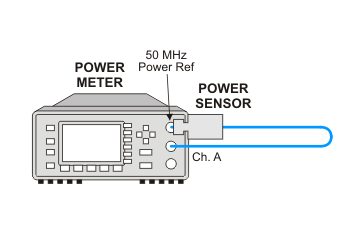
The Gain Compression test verifies the ability of the instrument to measure a low-amplitude signal in the presence of a higher-amplitude signal and verifies that it meets the published specifications. Two signal sources are required and are provided by a signal generator and a swept signal generator connected through a directional bridge. Using a power meter, the amplitude of the higher-amplitude signal is measured at the test point frequencies.
With the swept signal generator output turned off, the signal generator signal is measured with the VSA. The measured value is the uncompressed amplitude (Amp uncomp) With both of the source outputs turned on, the input signal is measured with the VSA. This measured value is the compressed amplitude. The difference between the uncompressed amplitude (Amp comp ) and the compressed amplitude is the measured gain compression for the instrument.
Click here for troubleshooting.
Related adjustment: None
|
Test Equipment |
Recommended Model Number |
|---|---|
|
RF Source 1 |
E8257D |
|
Secondary source |
33250A function generator |
|
Power meter |
N1914A |
|
Power sensor |
N8482A |
|
Directional bridge |
86205A |
|
Cable, BNC |
8120-2582 |
|
Adapter, Type-N (f) to BNC (m) |
1250-1477 |
|
Adapter, Type-N (m) to BNC (f) |
1250-1476 |

 click here.
click here.
 click here.
click here.